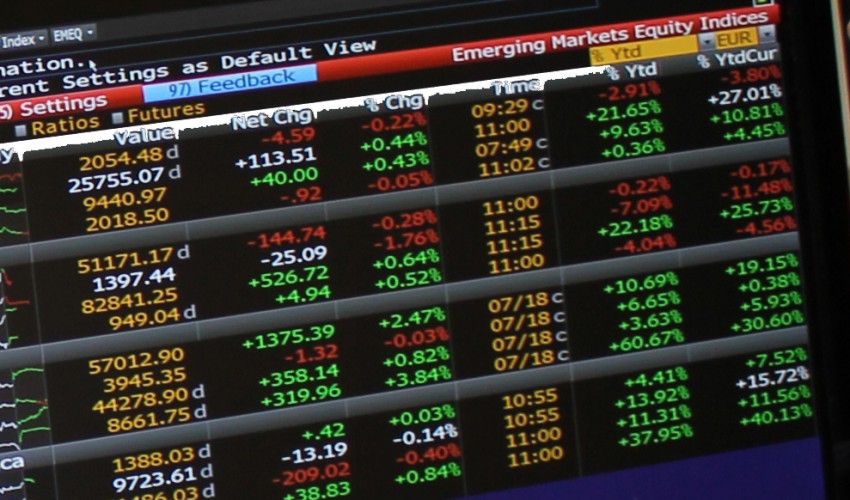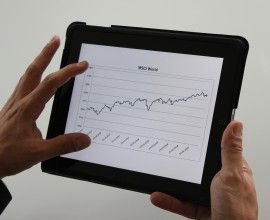
Investment Blog on Gold
Since Gold spot price is currently the strongest asset on a 2016 year-to-date basis we want to take a closer look at it now.
What is Gold?
Gold is a soft, heavy, shiny metal. It is a chemical element. It has been used for many thousands of years by people all over the world, for jewelry, decoration and as money. Gold is important because it is rare, but also easier to use than other rare metals. It is also used to repair teeth and in electronic equipment such as computers.
What drives the Gold price?
Gold pays no interest rates, dividends or rents. The price is driven by demand and supply only. About 190’000 tons of gold is existing above grounds. This equals a cube with a length of less than 22 meters. Though the gold stock grows by only 1 or 2% per year, very little metal is irretrievably consumed.
Supply: The biggest global exporters of gold (Switzerland, UK, Hong Kong, US) are not necessarily the biggest producers (China, Australia, US, Russia, Peru, South Africa). There is considerably dynamics in both parties. While South Africa used to be the biggest global producer since 1905, China overtook global leadership in 2007 and South Africa has slipped to number 6 since then. Central banks can impose a strong influence depending on their policy like pegging their currency to gold (“Gold Standard”). In recent years and decades the trend has been away from this monetary instrument. The last currency to be divorced from gold was the Swiss Franc in 2000. The sale of physical gold holdings by central banks around the world had caused agreements to curb the total amount being sold – e.g. 400 tons per year in the Washington Agreement on Gold of 2009. In 2014 major European central banks such as from Switzerland, Germany, France, Italy etc. signed an agreement that they would refrain from selling further gold holdings.
Demand: The consumption of gold is about 50% in jewelry, 40% in investments, and 10% in industry. India is the largest consumer of gold for jewelry, accounting for 27% of demand in 2009, followed by China and the USA. Jewelry and industrial demand have been increasing due to the steady expansion in emerging markets of middle classes aspiring to Western lifestyles. The most important industrial use for new gold is in fabrication of corrosion-free electrical connectors in computers, cell phone etc. Nearly one billion cell phones are produced each year which consumes $500 million in gold for just this application.
Gold as investment
Again, gold pays no interest rates, dividends or rents. Thus it can be questioned if it is an asset. However it is money. And money is what money does. Gold has been a widely accepted medium of exchange for a history of several thousand years. It’s a great storage. And it’s considered a safe haven in times of distressed financial markets.
There is a large range of instruments to gain exposure to gold such as bars, coins, exchange traded products, certificates, allocated and unallocated accounts and derivatives. Any kind of physical gold investments incur spread costs at the time of purchase and sale with decreasing spreads at larger volumes. Storage costs are mostly caused by protection against theft. Thus financial instruments can be a cheaper, however also a more indirect access to gold.
Gold mining stocks provide the investor with a special exposure to gold price. Stocks can pay dividends and thus they certainly are an asset. Due to fix costs and debt involved they offer some leverage to the gold. However gold mining stock prices and profits are influenced not only by gold price but also by exchange rates, labour costs, political environment, discount factors etc. which cause additional volatility to the stock price. Although this is being considered a disadvantage for stocks investors it creates excellent opportunities for structured products.
How safe is it?
Many investors perceive Gold as a safe haven. Gold is – unlike other global currencies – not linked to government debt. It does not perish, it is scarce, expensive to produce, offers protection against inflation. Sounds very much like Bitcoins (see also our Bitcoin special), doesn’t it? So gold investors that would never buy Bitcoins should ask themselves why? Of course, gold is easier to handle and has been accepted anywhere around the world for a very long history.
Particularly in times of global currency crisis such as the Greek drama (see also our special on Greece) investors rush to gold. And the threat of a global currency break-down is probably the most interesting scenario when gold can protect its owner’s liquidity and wealth.
However gold shows significant volatility – 16.1% p.a. for the last year compared to 16.7% p.a. of the Dow Jones Industrial. For example in 2013 the gold spot price in USD lost 28% – that was just in one year.
In case of physical gold investors have to beware from counterfeiters delivering lead instead of gold and of course from burglars if the investor buys and stores outside the financial system.
Where does the Gold price go from here?
Erwin Lasshofer and his INNOVATIS team expect gold to stay volatile and with a higher chance on the upside. We do see an increasing number of investors that fear increasing global government debt. They seek protection from a possible currency crisis. This is probably the key driver for gold prices. We expect monetary expansion to continue (see also outlook interest rates). Despite a lack of reliable numbers we do see indications that central banks’ selling programs are fading out. The extremely low interest rate environment supports the gold price further since this makes opportunity costs for gold investments low.
However we don’t see inflation since we don’t see strong global growth. In case of a continuing deflationary scenario gold investors would lose a key motivation. Furthermore demand from jewelry buyers in Emerging Markets could drop significantly due to negative income and wealth effects.
On the production side we expect no big changes. There are many idle mining projects and production sites that could be reactivated at higher gold prices quickly and thus boost supply and curb prices.
How does INNOVATIS invest in Gold?
Erwin Lasshofer and his INNOVATIS team take advantage from volatility in gold by designing structured products based on gold spot price and gold mining stocks. With our large network of top-rated issues we offer structured notes with fixed or conditional coupons ranging from 5-15% p.a. – with terms from 1 to 5 years in all major currencies. Check with us for an individual offer and also for our Managed Account.
Archives
- June 2019 (1)
- March 2019 (1)
- February 2019 (1)
- December 2018 (1)
- May 2018 (1)
- January 2018 (1)
- December 2017 (2)
- October 2017 (1)
- September 2017 (1)
- August 2017 (1)
- July 2017 (1)
- June 2017 (2)
- May 2017 (2)
- April 2017 (2)
- March 2017 (3)
- February 2017 (2)
- January 2017 (2)
- December 2016 (4)
- November 2016 (3)
- October 2016 (3)
- September 2016 (2)
- August 2016 (5)
- July 2016 (2)
- June 2016 (4)
- May 2016 (1)
- April 2016 (4)
- March 2016 (5)
- February 2016 (3)
- January 2016 (3)
- December 2015 (5)
- November 2015 (5)
- October 2015 (4)
- September 2015 (3)
- August 2015 (7)
- July 2015 (7)
- June 2015 (5)
- May 2015 (6)
- April 2015 (9)
- March 2015 (9)
- February 2015 (9)
- January 2015 (9)
- December 2014 (11)
- November 2014 (10)
- October 2014 (3)
- September 2014 (1)
- August 2014 (2)
- July 2014 (2)
 Investor Login
Investor Login

